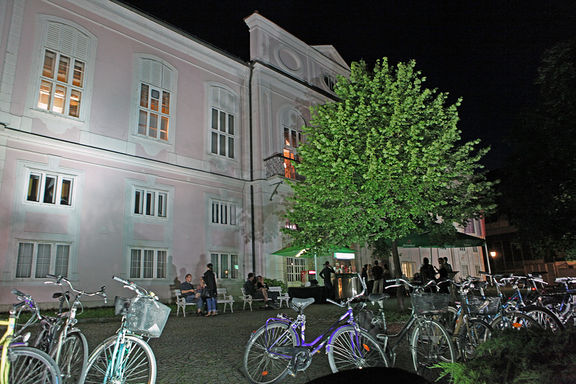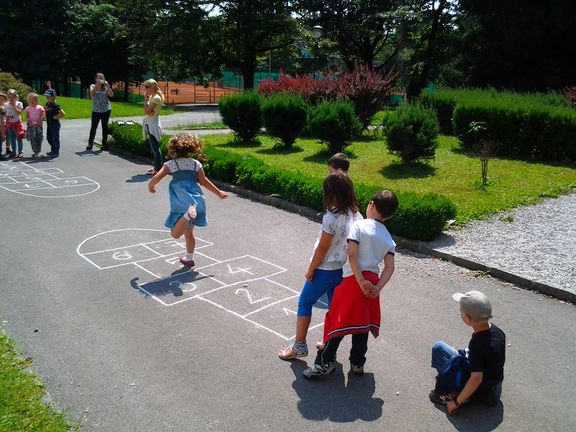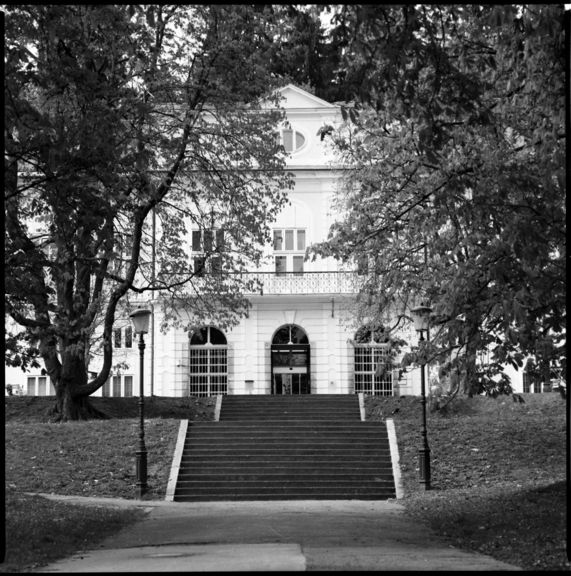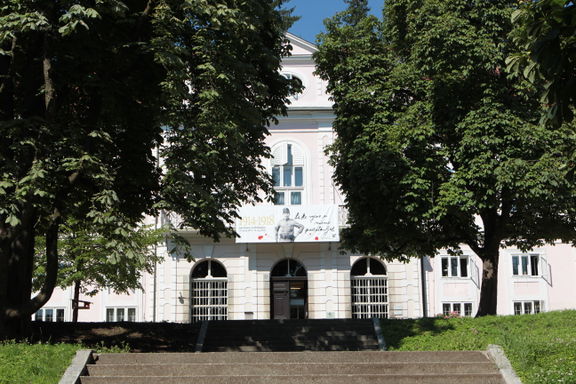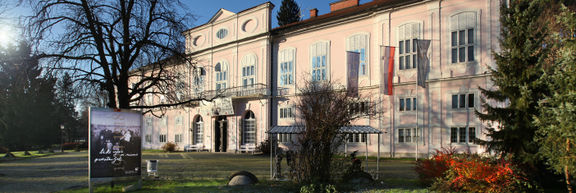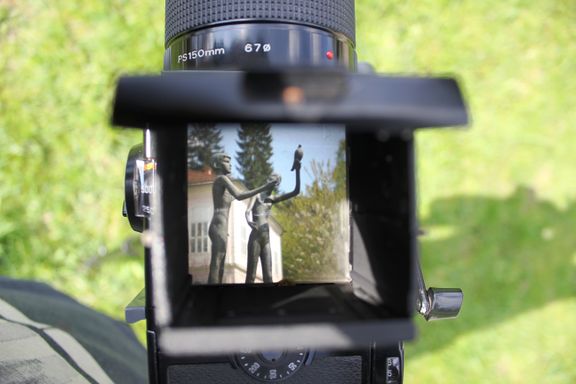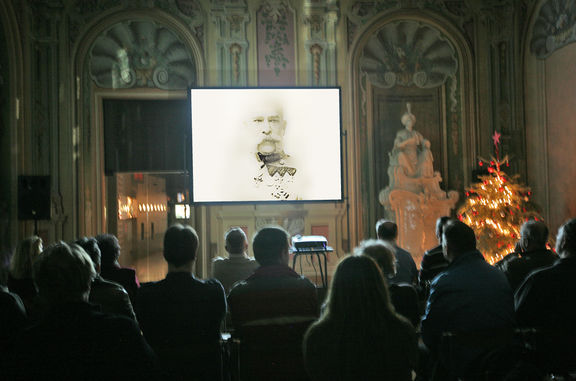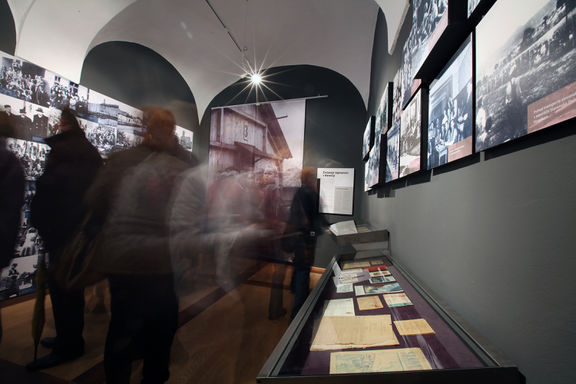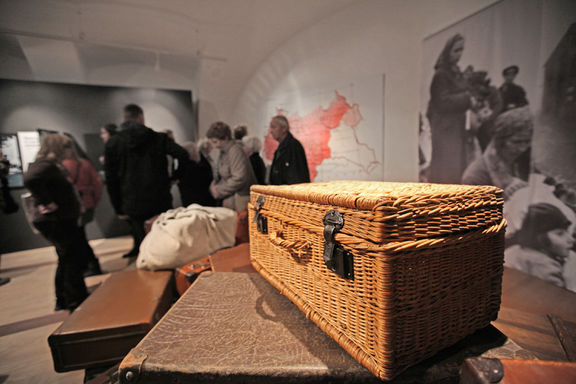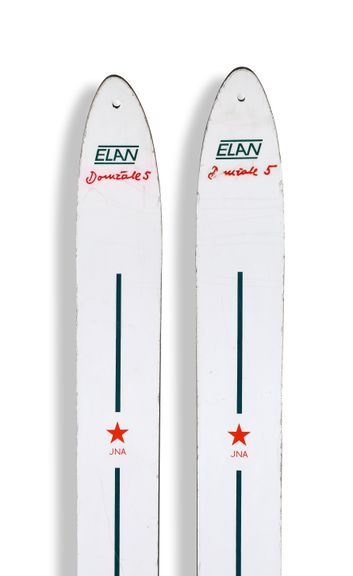Difference between revisions of "National Museum of Contemporary History"
(founder) |
(infobox) |
||
| Line 9: | Line 9: | ||
| town = SI-1000 Ljubljana | | town = SI-1000 Ljubljana | ||
| mailing address = P O Box 1644, SI-1000 Ljubljana, Slovenia | | mailing address = P O Box 1644, SI-1000 Ljubljana, Slovenia | ||
| − | | telephone = 386 (0) 1 300 | + | | telephone = 386 (0) 1 300 9611 |
| fax = 386 (0) 1 433 8244 | | fax = 386 (0) 1 433 8244 | ||
| email = uprava@muzej-nz.si | | email = uprava@muzej-nz.si | ||
| Line 18: | Line 18: | ||
| name = Kaja Širok | | name = Kaja Širok | ||
| role = Director | | role = Director | ||
| − | | email = | + | | email = kaja.sirok@muzej-nz.si |
}}{{Contact | }}{{Contact | ||
| name = Nataša Strlič | | name = Nataša Strlič | ||
Revision as of 11:43, 12 March 2014
-
to
27 Nov 2018
19 Jan 2019
The exhibition In Search of Freedom 1968-2018, prepared by the Beletrina Publishing Institute, National Museum of Contemporary History, The History Meeting House, Warsaw, and EUROM Barcelona, supported by the CMEPIUS - Centre of the Republic of Slovenia for Mobility and European Educational and Training Programmes,
-
to
28 Sep 2018
28 Oct 2018
The exhibition The history revisited. Doctor Mario Cordaro and the artists from Slovenia and Croatia at the concentration camp in Gonars 1942–1943, in cooperation with the National Museum of Contemporary History
-
to
16 Aug 2018
17 Aug 2018
Radio-Television Slovenia (RTV Slovenia) presents three documentary films The Breakthrough at Kobarid, Galician Planes in Blood Bath, and Ozadja prestolonaslednikove smrti, all directed by Valentin Pečenko, featuring Valentin Pečenko and Marko Štepec (National Museum of Contemporary History) as guest speakers, at the scientific symposium World War I Through the Eyes of Poles and Slovenes, supported by the Embassy of the Republic of Slovenia Warsaw,
-
to
17 May 2018
13 Jan 2019
The exhibition What Remains: Traces of Refugees, featuring refugee objects from the National Museum of Contemporary History collection (Being Refugee: A European Narrative project),
-
8 Jun 2016
Museums and their role in the society through the EMEE project, a lecture by Kaja Širok and Urška Purg from the National Museum of Contemporary History,
-
to
18 Jan 2014
20 Apr 2014
The exhibition 1914, organised in the framework of Riga - the European Capital of Culture, featuring works by France Kralj and Tone Kralj (Božidar Jakac Gallery), Fran Tratnik (National Museum of Contemporary History), and Ivan Vavpotič (National Gallery of Slovenia)
Mission
The National Museum of Contemporary History is a state museum responsible for the movable and intangible cultural heritage of the 20th-century Slovene history. It houses fine art and documentation department, a photographic department containing more than a million original photographs, a conservation–restoration workshop, an administration department and a library. Different events take place in the museum's two halls, such as the Festival Unicum.
Cekin Castle
In the mid-18th century, when Lamberg Castle was erected by Count Leopold Karl Lamberg, the mansion stood in a Ljubljana suburb. The architect Johann Georg Schmidt built it in 1725–1752 without high ambitions, as it was designed merely for dancing parties. Its later name Cekin derives from a deformation of a family name Szögeny, who was later an owner. The mansion had several eminent residents: Italian viceroy Eugen Beauharnais in 1813, the poet France Prešeren was a domestic teacher in 1818–1819, and family Kozler as last owners before the nationalisation after the Second World War.
The building was transformed into a museum by the plans of Edo Mihevc in 1952, who inserted a mezzanine above the ground floor. In 1992 the mansion was rearranged again by architect Jurij Kobe, when the attic was converted into a warehouse, and an elevator out of steel and glass was added at the backside.
The two-storey late Baroque mansion has a central projection and behind it an entrance hall on the ground floor and the Knights' Hall on the first floor, which used to be a dancing hall. The Knights' Hall has Baroque paintings on walls and a ceiling in Illusionistic style and two decorative stoves. The main staircase is at its backside. It is declared a cultural monument of state importance.
Collections
The museum's collections include weapons, military equipment, numismatics, textiles, medals, and decorations, plaques, postcards, photographs, films and videos, badges and signs, rubber stamps, seals and printing blocks, philately and cartography. A fine art collection, a collection of personal items and documents, and of gifts to former president Milan Kučan are worth mentioning as well.
One of the most impressive collections is the comprehensive archive of the photo-reporter Edi Šelhaus (1919–2011) with 2,026 original b/w negatives from the Second World War and over 137,000 original b/w and colour photographs as well as slides and negatives, donated by the author (in 2000) and his main employee, the Delo Publishing House (in 2009).
Exhibitions
Of particular note is the permanent exhibition Slovenes in the 20th Century, opened in 1996 and revised in 2006, which illustrates the history of Slovenes from 1914 until the present day. The exhibition presents Slovene economic, political, and cultural history in its broadest sense. In addition to turning points in history, such as wars and the foundation of the new state, the exhibition also attempts to illustrate everyday life in the historical development. Because of this exhibition, the museum was nominated for the European Museum of the Year Award in 1998.
The exhibition displays Terror during World War II, the Partisan Sanitary Service and Printing Houses and Wartime Press 1941–1945, a reconstructed Partisan Workshop, and a hand-operated printing works.
The equipment in the final exhibition room enables visitors to browse the computer database for exhibited objects. By using modern communication or audiovisual technology, the museum also tries to provide visitors with information on material which is not on display. Soon all documentation will be available online.
The museum also prepares exhibitions for overseas touring, for example the exhibition The Making of Slovenia, which toured to Dublin in 2002, and the exhibition Culture in the National Liberation War, which travelled to Sgonicco near Trieste in 2003. An exhibition entitled There over the Hills is like here, European Themes of Slovene History, accompanied by multilingual catalogues, is readily available for touring. The borrowing of museum objects and documents is possible in accordance with state regulations.
The museum includes a temporary exhibition area and a lecture room in the Knights' Hall with 30 seats which is suitable for screenings and lectures. Some previous temporary exhibitions are: Unite, Unite Poor Peasants: persecution of farmers in Slovenia 1945–1955 (2009), The World of Music in the 60s – on the 90th Anniversary of the Photojournalist Edi Šelhaus (2009) about the first Yugoslav jazz festivals between 1960 and 1963 and festivals of popular songs in the 1960s , memorial exhibitions dedicated to Jože Pučnik and Janez Drnovšek (2008), Slovenian European Union Council Presidency 2008 (2008), Slovenes and the First World War 1914–1918 (2008), State of Slovenians, Croats and Serbs 1918–2008 (2008).
Publications
The temporary exhibitions are accompanied by catalogues. In addition the museum publishes its newsletter Museum's News twice a year (in Slovenian and English), also available online, and monographies on Slovene recent history, like The Making of Slovenia (in English) in 2009, and video and electronic media, like Art Collection : Authors and their Works (in Slovenian and English) in 2007, and Slovenian Museums (in Slovenian and English) in 1997.
See also
- Museum of Political Prisoners, Internees and Deportees, Brestanica
- National Museum of Contemporary History Library
- Institute of Contemporary History
- Celje Museum of Recent History
National Liberation collections
- Maribor National Liberation Museum
- Zagorje National Liberation War Collection
- National Liberation Movement Collection, Središče ob Dravi
- Vaneča Memorial Room – District Committee of the Association of National Liberation War Veterans Murska Sobota
- Baza 20 Memorial Site, Kočevski Rog
- Zidanšek Pohorje Brigade Exhibition
- Pohorje Partisan Exhibition
External links
- National Museum of Contemporary History website
- National Museum of Contemporary History on Virtual Guide to Slovene Museums and Galleries
- National Museum of Contemporary History – kraji.eu



